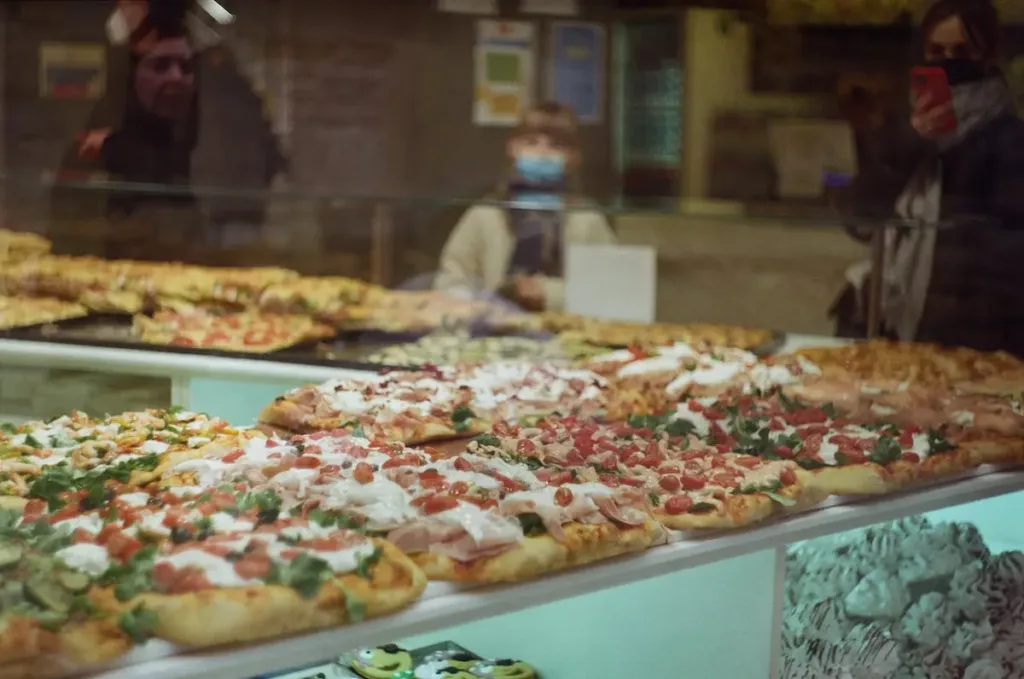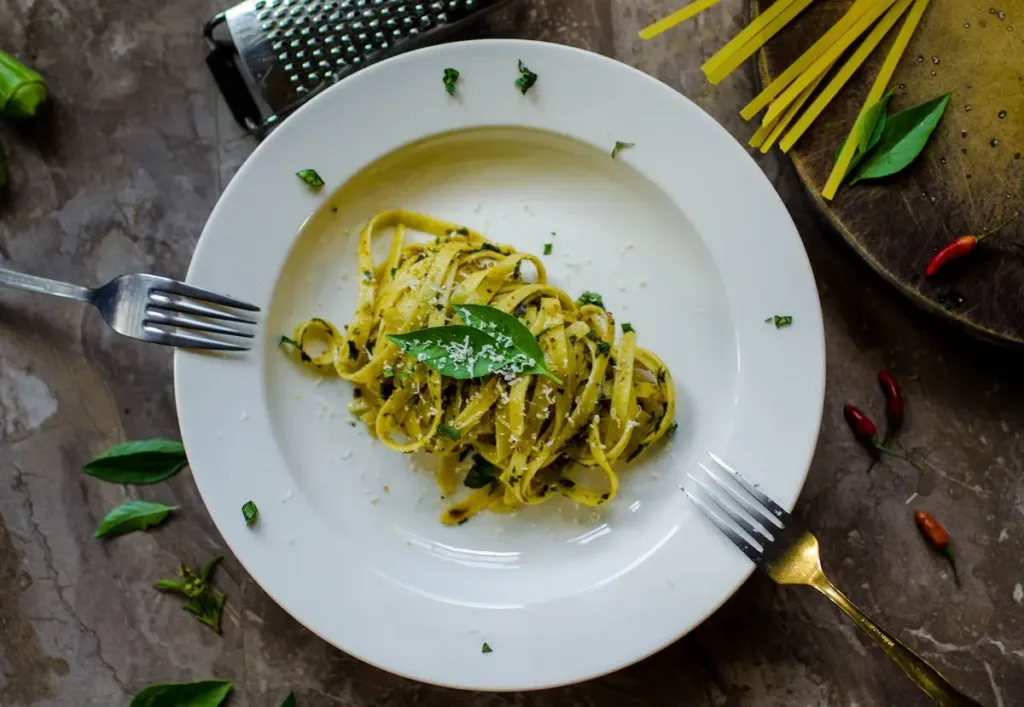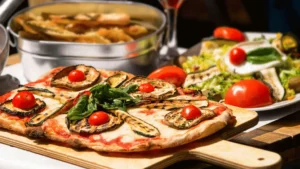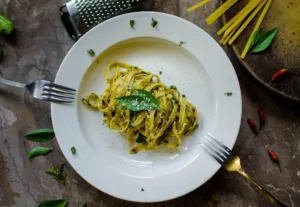Northern Italian cuisine, a treasure trove of gastronomic delights, stands out in the world of cuisines for its distinctive flavors and rich history. This cuisine, deeply rooted in the culture and traditions of regions like Lombardy, Veneto, and Tuscany, offers a diverse array of dishes that have gained international acclaim. From the succulent ossobuco to the creamy risotto, Northern Italy’s food landscape is a testament to the country’s culinary prowess.
The Essence of Northern Italian Cooking
At the heart of Northern Italian cuisine is the use of fresh, high-quality ingredients. Olive oil, a staple in Mediterranean cooking, is extensively used alongside butter, especially in regions bordering Switzerland and Germany. Fresh vegetables, seafood, and meats form the backbone of many dishes, reflecting the region’s diverse geography, from the coast to the mountains. The infusion of herbs such as basil and sage adds a layer of complexity and aroma to the food.
Northern Italy’s proximity to other countries like Switzerland and Germany has also influenced its culinary traditions, introducing a variety of spices and techniques to its cooking repertoire. This fusion of flavors is evident in dishes that combine local ingredients like polenta, a corn-based staple, with cheeses like fontina, adding a unique twist to traditional recipes.

Iconic Dishes of Northern Italy
When one thinks of Italian cuisine, pasta and pizza often come to mind. However, Northern Italian cuisine offers so much more. Risotto, a creamy rice dish often infused with saffron, is a hallmark of the region, particularly in Lombardy. Gnocchi, small dumplings made from potatoes, cheese, and flour, are another popular dish, often served with a rich, buttery sage sauce.
Seafood plays a significant role in the coastal areas, with dishes like seafood risotto showcasing the region’s affinity for combining rice with fresh fish and shellfish. In the inland areas, meats such as pork, beef, and especially game, feature prominently in the cuisine, often accompanied by polenta or risotto.
Truffles, those prized underground fungi, are a delicacy in Northern Italy. Their earthy flavor enhances a variety of dishes, from pasta to risotto, adding a touch of luxury to the dining experience.
Antipasto and Other Starters
No discussion of Northern Italian cuisine is complete without mentioning antipasto, the traditional starter course. This can include a variety of foods, such as bruschetta topped with tomatoes and basil, prosciutto with melon, or an assortment of cheeses and olives. These dishes set the stage for the meal to come, highlighting the region’s ingredients and flavors.
Cheeses and Balsamic: The Flavor Enhancers
Cheese is an integral part of the cuisine, with varieties like parmesan (Parmigiano-Reggiano) being not just an accompaniment but a star ingredient in many recipes. Balsamic vinegar, especially the traditional balsamic from Modena, is another key ingredient, used to add depth and sweetness to dishes.
Breads, Pastries, and Desserts
Bread is a staple in Northern Italian meals, often served alongside the main dishes. Desserts are an essential part of the cuisine, with tiramisu, a coffee-flavored dessert made with mascarpone cheese, ladyfingers, and cocoa, being one of the most famous. Cannoli, though more associated with Southern Italy, also finds its way into the Northern Italian dessert repertoire.
Pairing Food with Wine
Northern Italy is also renowned for its wine, with regions like Tuscany and Lombardy producing some of the best wines in the world. Pairing food with the right wine is an art, and in Northern Italy, this is done with pride and precision. Whether it’s a robust red to go with ossobuco or a light white to accompany seafood risotto, the right wine can elevate a meal to new heights. Check out our other post on discovering the best wine for Italian food.
The Cultural Significance of Food in Northern Italy
Food in Northern Italy is more than just sustenance; it’s a part of the culture and a source of pride. Families pass down recipes through generations, preserving the traditions and flavors of the region. Meals are a time for gathering and celebration, reflecting the importance of food in bringing people together.

A Deeper Dive into Northern Italian Delicacies
Pasta and Pizza: Beyond the Basics
While pasta and pizza are ubiquitous in Italian cuisine, Northern Italy offers its unique takes. Unlike the thinner crusts of Naples, Northern Italian pizzas often have a thicker crust, baked to perfection, and topped with ingredients like gorgonzola, mushrooms, and prosciutto. Pasta, though universally loved, takes a distinctive form in the North. Tagliatelle, tortellini, and lasagna, hailing from regions like Emilia-Romagna, are served with rich, meat-based sauces, showcasing the robust flavors typical of the area.
Risotto: A Rice Revelation
Risotto is not merely a dish; it’s a culinary icon in Northern Italy. This creamy rice dish is versatile, with variations like Risotto alla Milanese, where saffron is used to impart a vibrant color and unique flavor. The rice absorbs flavors from the broth, wine, and ingredients like porcini mushrooms or seafood, creating a dish that’s rich in both taste and texture.
Gnocchi and Polenta: The Comfort Foods of the North
Gnocchi and polenta, though simple in their basic ingredients, are elevated to gourmet levels in Northern Italian cuisine. Gnocchi, often made with potatoes, flour, and eggs, is served with a variety of sauces, from classic tomato and basil to rich gorgonzola cream. Polenta, a staple in Northern kitchens, is cooked slowly and can be served creamy or allowed to set and then grilled or fried. It’s often accompanied by meat stews or mushroom ragouts, absorbing the flavors and adding its subtle corn essence.
The Use of Herbs and Spices
Herbs like basil, sage, and rosemary are used liberally to season dishes, imparting fragrance and depth. Spices, though used more sparingly compared to other cuisines, play a crucial role in dishes like ossobuco, where a hint of cinnamon or clove can add an extra layer of flavor.

Seafood: A Coastal Bounty
The Northern Italian coast, especially regions like Liguria and Veneto, offers an abundance of seafood, which is reflected in the local cuisine. Dishes like seafood risotto and fish stews celebrate the fresh catch of the day. Anchovies, sardines, and other fish are often used in pasta dishes, bringing the taste of the sea to the table.
The Truffle: A Northern Italian Treasure
Truffles, especially the highly prized white truffles from the Piedmont region, are a cornerstone of Northern Italian luxury cuisine. Shaved over pasta, risotto, or even simple scrambled eggs, truffles add an unmistakable aroma and flavor that is both earthy and sublime.
Desserts: A Sweet Finale
Northern Italian desserts are as varied as the region itself. Apart from tiramisu and cannoli, desserts like panna cotta, a creamy, gelatin-set dessert often topped with fruit or caramel, and zabaglione, a light custard made with egg yolks, sugar, and sweet wine, are popular. Biscotti, almond biscuits typically served with Vin Santo, a sweet dessert wine, offer a perfect end to a meal.
The Influence of Neighboring Countries
The culinary influence of neighboring countries like Switzerland, Austria, and France is evident in Northern Italian cooking. This is seen in the use of ingredients like butter, cream, and various types of cheese, and in techniques such as braising and stewing meats. This melding of cultures and flavors adds a unique dimension to the cuisine, distinguishing it from the simpler, olive oil-based cooking of the South.
Wine and Cheese: A Perfect Pairing
The wine and cheese from Northern Italy are internationally renowned. Regions like Piedmont and Tuscany are known for their outstanding wines, such as Barolo and Chianti, which are often paired with local cheeses like Gorgonzola, Taleggio, and Parmigiano-Reggiano. This pairing of wine and cheese is not just a culinary practice but a cultural ritual that reflects the region’s deep appreciation for its gastronomic heritage.
Festivals and Food Traditions
Food in Northern Italy is celebrated not just in restaurants and homes but also through numerous festivals and traditions. Events like the Alba White Truffle Festival in Piedmont and the Vinitaly in Verona showcase the region’s finest truffles and wines, drawing connoisseurs from around the world. These festivals are not just about food and wine; they are celebrations of regional identity and pride, uniting people in their shared love for their culinary traditions.
Conclusion: A Culinary Culture Rich in History and Flavor
Northern Italian cuisine, with its rich tapestry of flavors, ingredients, and cooking techniques, is a reflection of the region’s diverse history and cultural influences. From hearty polenta dishes to delicate truffle-infused pastas, the food of Northern Italy is a journey through a landscape of culinary excellence. It’s a cuisine that respects tradition while embracing innovation, offering a dining experience that is both comforting and extraordinary. Whether enjoying a simple plate of pasta or a gourmet seafood risotto, one is not just tasting food but partaking in a centuries-old culinary tradition that is an integral part of the Northern Italian way of life.







